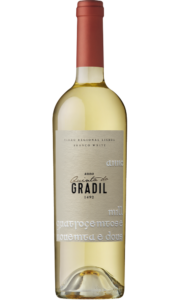
In the 16th century, the property abounded in game and it was one of the estates elected by royalty as a hunting ground. However, it was only in the 17th century that vineyards and wine became important economic activities, with the city of Lisbon representing the main destination of the generated production. In the 18th century, King Joseph I of Portugal ordered all the vines in the region to be grubbed up, so that cereal crops could be grown, as well as favour the interests the Marquis of Pombal had in the Douro region. After several complaints from local farmers, in 1769, a survey at Quinta do Gradil and surrounding lands recognised that they were more appropriate and important for the production of good wines than bread. This was a decisive moment in the history of Quinta do Gradil. The second most decisive moment occurred in the 19th century, with Ms. Maria do Carmo Romeiro da Fonseca being the protagonist. The young woman inherited Quinta do Gradil from her father, who had bought it, and turned it into a leading farming business, focused on winemaking. The entrepreneur was born in Sanguinhal in 1829, into a family that was already making and selling wine. She commissioned the construction of the main house and the yellow palace, transforming the land not only into a winemaking space but also into a leisure area. Even after she was widowed and with a small daughter, she kept a spirit of entrepreneurship and had an unusual attitude at the time, that is, a working woman and manager, who was not confined to her home and to care for her family. The aqueduct and the chapel of St. Rita of Cascia were also built during this period. The connection to the Marquis of Pombal first appears in the history of Quinta do Gradil through Maria do Carmo’s daughter, who was named after her mother, when she married the 6th Marquis of Pombal. In 1963, the estate was managed by Isidoro Maria d’Oliveira, a farmer, who was also a man of culture and poet, but also a vintner, who kept the activity, with Quinta do Gradil as a significant supplier of wines to the Lisbon market. The 21st century marks the entry of Luís Vieira into the business.






